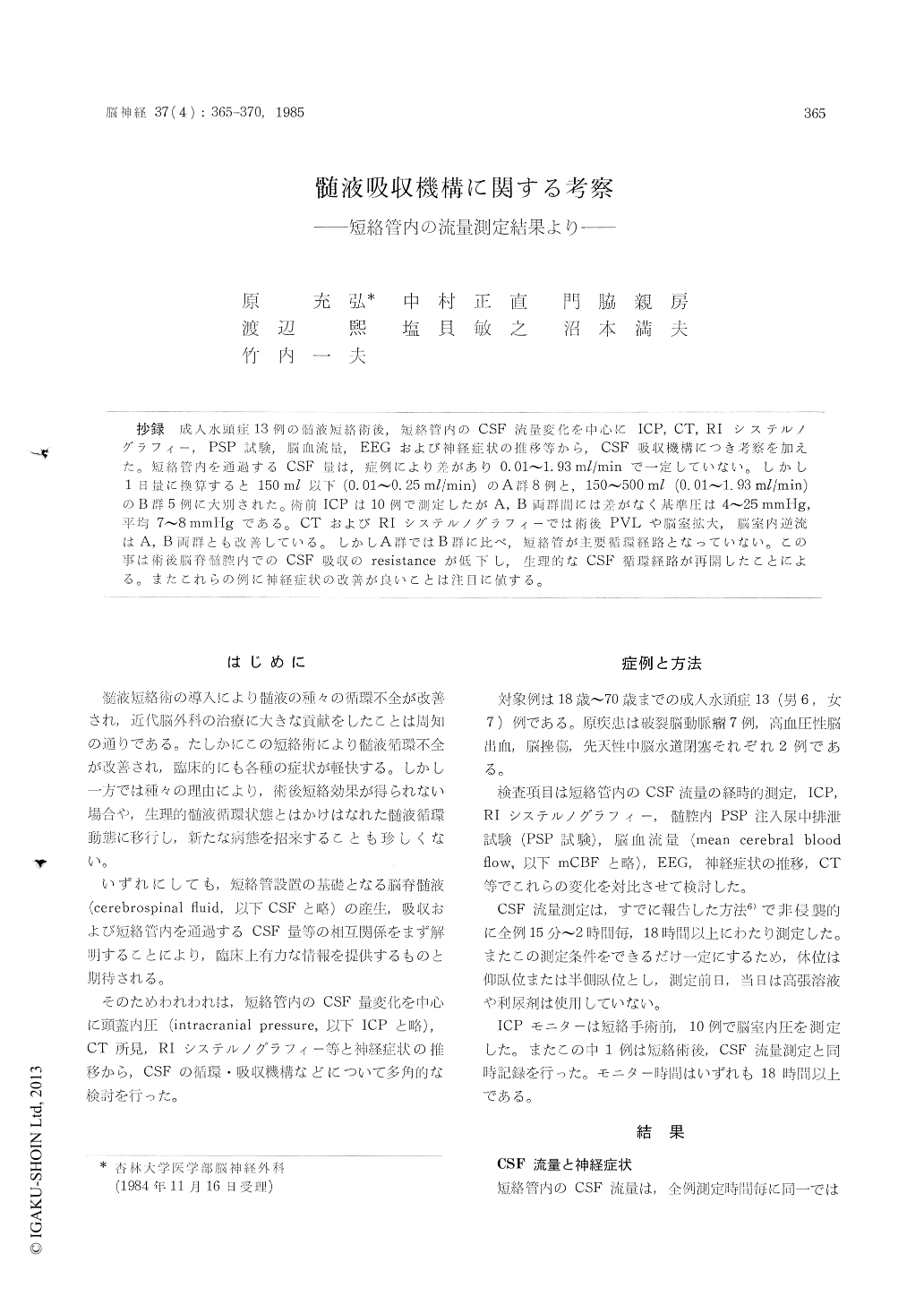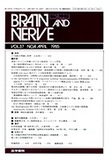Japanese
English
- 有料閲覧
- Abstract 文献概要
- 1ページ目 Look Inside
抄録 成人水頭症13例の髄液短絡術後,短絡管内のCSF流量変化を中心にICP,CT,RIシステルノグラフィー,PSP試験,脳血流量,EEGおよび神経症状の推移等から,CSF吸収機構につき考察を加えた。短絡管内を通過するCSF量は,症例により差があり0.01〜1.93ml/minで一定していない。 しかし1日量に換算すると150ml以下(0.01〜0.25ml/min)のA群8例と,150〜500ml (0.01〜1.93ml/min)のB群5例に大別された。術前ICPは10例で測定したがA,B両群問には差がなく基準圧は4〜25mmHg,平均7〜8mmHgである。CTおよびRIシステルノグラフィーでは術後PVLや脳室拡大,脳室内逆流はA,B両群とも改善している。しかしA群ではB群に比べ,短絡管が主要循環経路となっていない。この事は術後脳脊髄腔内でのCSF吸収のresistanceが低下し,生理的なCSF循環経路が再開したことによる。またこれらの例に神経症状の改善が良いことは注目に値する。
The cerebrospinal fluid (CSF) absorption me-chanism in cases of hydrocephalus was investigated on the basis of measurements of CSF flow in a shunt tube after ventriculo-peritoneal shunt sur-gery, monitoring of intracranial pressure, CT find-ings, radioisotope cisternography, cerebral blood flow, EEG, PSP tests and changes in neurological findings.
The subjects were 6 males and 7 females aged from 18 to 70. CSF flow rates in the shunt tubes were between 0.01 and 1.93 ml/min. Calculating the daily volume of CSF flow, the subjects were divided into two groups : Group A (8 patients) with a volume of less than 150 ml/day (0.01-0.25 ml/min), and Group B (5 patients) with between 150 and 500 ml/day (0.01-1.93ml/min).
Monitoring of intracranial pressure prior to the shunt operation was performed in 10 cases. These pressure values ranged between 4 and 25 mmHg(mean : 7-8 mmHg), and there was no difference between the two groups.
The pre-and post-operative radioisotope cister-nography findings indicated improvement of vent-ricular dilatation, periventricular lucency and ventricular reflux.
After the shunt operations, there was neurolo-gical improvement in 6 of the 8 Group A cases but only in 2 of the 5 Group B cases.
Considering the CSF flow volumes of the two groups, it appears that in Group A the shunt tube is not the main CSF circulation pathway. This could mean that resistance to CSF absorption in the cerebrospinal space has decreased after the shunt operation and there has been recovery of the physiological CSF absorption pathways. In other words, neurological improvement can be expetced in this group A.

Copyright © 1985, Igaku-Shoin Ltd. All rights reserved.


